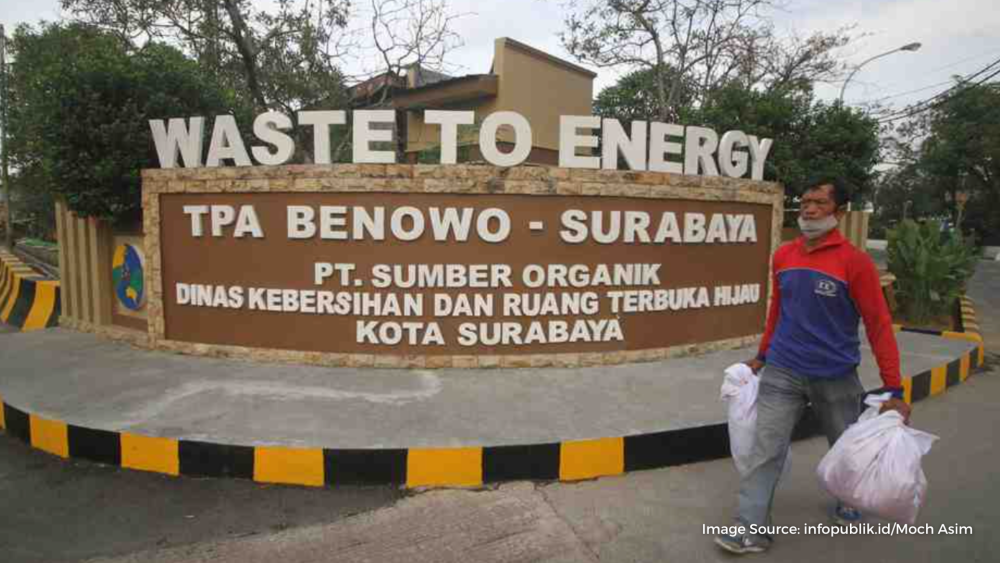Indonesia’s Bioenergy Industry Prepares for Growth in 2025
12 Aug 2025

Indonesia is at a pivotal point in its energy transition, with bioenergy emerging as one of the country’s main resources for achieving a cleaner and more self-sufficient energy system. The sector has drawn renewed attention from policymakers and investors alike, supported by the country’s abundant agricultural and forestry residues.
The Institute for Essential Services Reform (IESR) identifies the agroindustry—particularly pulp and paper, sugar, and palm oil—as the largest contributors to biomass supply. These industries generate byproducts such as husks, shells, and other residues that can be converted into electricity or biofuels. Forestry-based biomass, including wood pellets and lignocellulose from critical forest areas, also holds significant promise, with the Ministry of Environment and Forestry estimating annual wood-based biomass demand at 60 million tons to support co-firing and dedicated biomass power plants.
Projections from Statista indicate that bioenergy-based power plants in Indonesia are expected to produce 15.15 billion kilowatt-hours in 2025, growing modestly at 0.21% annually through 2029. This output represents only a fraction of the country’s technical potential, which the government estimates at 32.6 GW—nearly six times higher than the installed capacity of 5.5 GW currently included in the 2021–2030 Electricity Supply Business Plan (RUPTL).
Biomass Technical Potential vs Installed Capacity in Indonesia
|
Biomass Source Category |
Technical Potential (GW) |
Installed Capacity (GW) |
|
Forestry-based biomass (wood pellets, residues from sustainable forest management) |
10–12 |
~2.2 |
|
Agroindustry (palm oil residues, sugarcane bagasse, coconut shells, rice husks, corn cobs) |
15–20 |
~2.6 |
|
Livestock manure (biogas potential from cattle, poultry, and swine waste) |
3–5 |
~0.4 |
|
Municipal solid waste (organic fraction suitable for energy) |
4–6 |
~0.3 |
|
Total |
32.6 |
~5.5 |
Source: MEMR, PLN RUPTL 2021–2030, IEA Bioenergy, GAPKI, IETO 2025, industry news analysis. Installed value are approximate.
The government is accelerating biomass adoption through multiple programs, most notably a co-firing initiative involving 52 coal-fired power plants. This program targets an annual biomass demand of 9 million tons by 2025, replacing part of coal use and supporting Indonesia’s COP26 commitment to phase down coal. Policies are also pushing the biodiesel blend from B40 to B50 by 2026, which at full capacity will require 19 million kilolitres of palm oil fuel annually, according to the Indonesian Biodiesel Producers Association (APROBI).
President Prabowo Subianto’s visit to Brazil in July 2025 added further momentum to bioenergy cooperation. Brazil, a global leader in bioethanol production, has decades of experience integrating sugarcane-based fuel into its energy system. During the visit, Prabowo discussed opportunities for technology transfer, joint ventures, and research collaboration, particularly in second-generation bioethanol. Investment Minister Bahlil Lahadalia noted that bioethanol development is part of Indonesia’s national strategy to create a sustainable and inclusive energy ecosystem, while opening new economic opportunities in rural areas and aligning with Brazil’s proven expertise in bioenergy.
Supply-side challenges, however, remain. The Indonesian Palm Oil Association (GAPKI) reports that palm oil production growth averaged only 0.42% annually between 2020 and 2024, while domestic consumption grew by 7.4% per year—driven largely by biodiesel demand rising at 14.8% annually. As a result, exports are projected to drop from 29.5 million tons in 2024 to 27.5 million tons in 2025.
Investment Outlook & Challenges
The investment outlook for bioenergy is supported by steady growth projections. According to Statista data compiled from Golden Agri-Resources, ERIA, and IEA Bioenergy, biomass-based power generation is expected to increase marginally but consistently over the next five years.
Bioenergy-Based Power Generation Projections in Indonesia
|
Year |
Power Generation (billion kWh) |
Annual Growth (%) |
|
2025 |
15.15 |
0.21 |
|
2026 |
15.20 |
0.33 |
|
2027 |
15.25 |
0.33 |
|
2028 |
15.30 |
0.33 |
|
2029 |
15.35 |
0.33 |
Source: Statista, Golden Agri-Resources, ERIA, IEA Bioenergy.
The slow pace of growth reflects structural constraints. Biomass resources are unevenly distributed, adding logistics costs and complexity to supply chains. Technology for large-scale biomass conversion is still developing, and high upfront investment requirements limit project bankability. Additionally, competition for land with food crops and housing can restrict biomass feedstock availability.
Industry stakeholders also point to policy bottlenecks. Power purchase agreement negotiations, permitting delays, and uncertainty in feed-in tariff adjustments have deterred some investors.
Despite these hurdles, opportunities exist in both domestic and export markets. The International Energy Agency forecasts sustained global growth in bioenergy demand, with investment projected to rise by 13% in 2025 to USD 16 billion. Demand for wood pellets in East Asia, particularly Japan and South Korea, continues to grow as those countries phase out coal. Indonesia’s forestry and agroindustry residues could meet part of that demand, provided supply chain and certification issues are addressed.
In the domestic market, potential expansion of co-firing and dedicated biomass plants could absorb greater volumes of locally sourced biomass, stimulating rural economies. Opportunities exist across palm oil residues, rice husks, forestry waste, and livestock manure. Biogas plants, small-scale biomass facilities, and integrated rural renewable systems are already demonstrating commercial viability in regions such as Java, Sumatra, and Kalimantan.
For investors, the sector offers multiple entry points—from supplying feedstock and developing power plant infrastructure to providing technology solutions for gasification, pyrolysis, and co-generation. Pertamina’s ongoing trials of Pertamax Green 95, a gasoline blend with 5% ethanol (E5), highlight early steps toward diversifying beyond palm oil and broadening the feedstock base.
As 2025 unfolds, the outlook for Indonesia’s bioenergy industry will hinge on three factors: the pace of technical readiness for B50 biodiesel, the ability to secure consistent biomass feedstock supply despite agricultural constraints, and the effectiveness of international cooperation in bringing technology and capital into the sector. With its substantial resource base, expanding policy support, and a clear role in the national energy transition, bioenergy remains positioned as a key growth area for investors seeking opportunities in Indonesia’s evolving renewable energy market.








